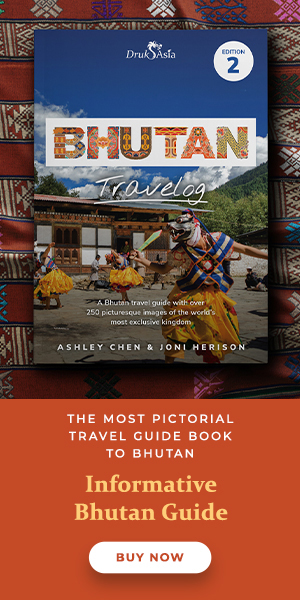BHUTAN
Travelog
Why Black-Necked Cranes Are Revered in Bhutanese Culture

Bhutan, a Himalayan kingdom known for its pristine environment and spiritual heritage, is also home to one of the world’s most graceful and endangered birds—the black-necked crane. These majestic creatures, revered in Bhutanese culture and protected by national law, are more than just seasonal visitors; they are symbols of peace, longevity, and harmony with nature.

What Are Black-Necked Cranes?
Black-necked cranes (Grus nigricollis) are large, elegant birds distinguished by their white bodies, black necks and heads, and a patch of red on the crown. They stand over a metre tall and have a wingspan of about 2 metres. These cranes are found only in the high-altitude wetlands of the Tibetan Plateau, parts of India, and Bhutan, making them one of the rarest crane species in the world.
Why Are They Special in Bhutan?
Every winter, between late October and mid-February, black-necked cranes migrate to Bhutan, primarily settling in the Phobjikha Valley in central Bhutan. Their arrival is eagerly awaited by locals and celebrated with joy, as the birds are believed to bring blessings.
In Bhutanese Buddhism, the black-necked crane is considered a heavenly bird. Their presence is thought to signify the health of the ecosystem, and harming them is taboo. They appear in Bhutanese folklore, murals, and songs, further emphasising their importance in both culture and conservation.
A Sacred Ritual: Circumambulating Gangtey Goemba
According to local legends, upon arriving in the valley, the cranes fly three graceful circles around the monastery before descending into the wetlands below. Then, when it’s time to depart in early spring, they repeat the ritual—circling the monastery once again as if offering a final farewell or seeking blessings for their journey.
To the Bhutanese, this is no coincidence. It is believed that the cranes are paying homage to the sacred site, performing a natural form of kora—a Buddhist practice of walking clockwise around a temple or stupa as a meditative act of devotion. The birds’ movement is seen as deeply auspicious, a divine gesture that reinforces the spiritual connection between the cranes and the land.
Monks, farmers, and travellers alike view this phenomenon as a powerful symbol of the harmony between sentient beings and the spiritual world. The sight of the cranes circling above the ancient monastery, set against a backdrop of misty mountains and pine forests, is an unforgettable experience—a moment where nature and faith seem to dance together in mid-air.
This sacred ritual has become an essential part of Phobjikha’s cultural identity and further elevates the spiritual importance of protecting these magnificent birds and their habitat.
Where Can You See Them?
The most popular place to see black-necked cranes is Phobjikha Valley in Wangdue Phodrang District. This wide glacial valley, set at an altitude of around 3,000 metres, provides the ideal wetland habitat for the cranes to feed and roost during the harsh winter months.
Other, smaller wintering sites include:
-
Khotokha Valley (Wangdue)
-
Lhuentse District in eastern Bhutan

Black-Necked Crane Festival
Each year on 11 November, the people of Phobjikha celebrate the Black-Necked Crane Festival at Gangtey Monastery. This vibrant festival combines traditional mask dances, folk songs, and crane-themed performances—many of them by schoolchildren dressed as the birds.
The festival raises awareness about the cranes and promotes conservation, all while providing a unique cultural experience for locals and tourists alike.
Conservation Efforts in Bhutan
Bhutan has made significant efforts to protect the black-necked cranes and their habitats. The birds are legally protected under Bhutanese law, and their wintering grounds—like Phobjikha—are designated conservation areas.
Key initiatives include:
-
Crane Observation and Education Centre in Phobjikha, which provides educational exhibits and telescope viewing for tourists.
-
Monitoring of crane populations by the Royal Society for Protection of Nature (RSPN).
-
Strict regulations on development within crane habitats to preserve wetland ecosystems.
Thanks to these efforts, Bhutan sees around 600–700 black-necked cranes arriving each winter, and the population trend is stable—an encouraging sign amid global habitat loss.
How You Can Help
If you’re visiting Bhutan and want to support black-necked crane conservation:
-
Visit Phobjikha responsibly—stay in eco-lodges and respect local customs.
-
Donate to conservation organisations like RSPN Bhutan.
-
Attend the Black-Necked Crane Festival to learn more and show support.
The black-necked cranes of Bhutan are more than just migratory birds—they are sacred symbols of the deep bond between nature and spirituality. Watching them glide silently over the misty valleys of Phobjikha is not just a wildlife experience, but a soul-stirring moment that reflects Bhutan’s harmony with the natural world.
If you’re lucky enough to see them in person, take a moment to be still. You’re witnessing one of the most beautiful and meaningful wildlife spectacles in the Himalayas.
Follow Druk Asia on social media for inspiring travel stories, breathtaking photos, and the latest updates from Bhutan.
Ready to Experience the Magic of Bhutan?
Fill in the form below and the friendly Bhutan Travel Specialist team will get back to you with expert advice, itinerary ideas, and everything you need to know. No obligations, just warm guidance from those who know Bhutan best.
Thank you for your message!
Hang tight—one of our friendly Bhutan Travel Specialists from Druk Asia will be reaching out soon with expert tips, insider advice, and exciting itinerary ideas to help you plan the adventure of a lifetime!
Discover
Breathtaking
Bhutan.
Thank you for subscribing!
You have successfully subscribed to our newsletter.




